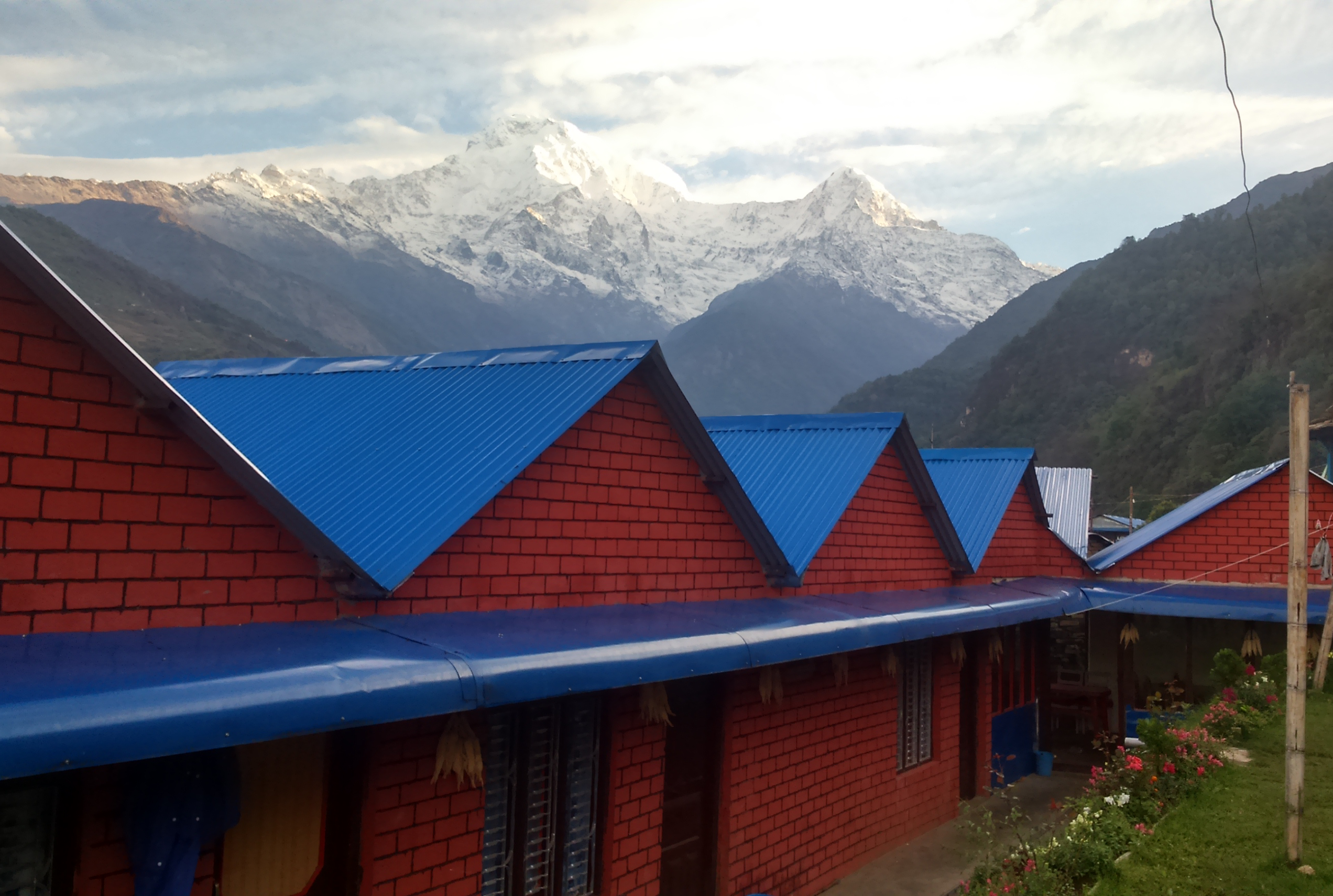
August 16, 2024
Poon Hill, a popular destination in the Annapurna region of Nepal, stands as a beacon for trekkers seeking breathtaking panoramic views and a taste of the rich culture of the Himalayas. Situated at an altitude of 3,210 meters (10,531 feet), Poon Hill offers one of the most accessible and rewarding trekking experiences in the region, making it a must-visit for both seasoned adventurers and first-time trekkers.
The trek to Poon Hill
The trek to Poon Hill typically begins from Nayapul, a small town about an hour’s drive from Pokhara, a serene city known as the gateway to the Annapurna region. The trail starts through lush forests, charming villages, and terraced farmlands, offering trekkers a glimpse of rural life in Nepal. The path is well-trodden and relatively easy, making it suitable for people of various fitness levels.
One of the highlights of the trek is passing through Ghorepani, a picturesque village that serves as the main base for the Poon Hill hike. Ghorepani, which translates to “horse water,” was historically a rest stop for traders. Today, it is a bustling hub for trekkers, offering comfortable lodges, warm hospitality, and spectacular views of the surrounding mountains.
The glimpse of sunrise
The main attraction of Poon Hill is the sunrise view. Early in the morning, trekkers begin their ascent from Ghorepani to the viewpoint. The hike is short but steep, taking about 45 minutes to an hour. As dawn approaches, the sky begins to change colors, casting a golden glow over the snow-capped peaks.
From the summit of Poon Hill, the panorama is nothing short of magical. The view encompasses some of the highest mountains in the world, including Dhaulagiri (8,167 meters), Annapurna I (8,091 meters), and Machapuchare (6,993 meters). The play of light and shadow as the sun rises over the peaks is a sight that leaves a lasting impression on all who witness it.
Cultural aspect
The trek to Poon Hill is not just about the natural beauty; it’s also an opportunity to immerse oneself in the rich culture of the region. The trail passes through villages inhabited by the Gurung and Magar communities, where trekkers can experience the traditional lifestyle, taste local cuisine, and learn about the customs and traditions of these ethnic groups.
The Gurung and Magar communities, who primarily engage in farming and animal rearing for their livelihood, are also known for their proud warrior heritage. These communities have earned a reputation as the brave Gurkhas, a term synonymous with valor and resilience. During World War I and II, many men from these communities served in the British and Indian armies, gaining recognition for their bravery and contributing significantly to the Allied forces. This history adds a layer of depth to the cultural experience of the trek, as visitors can gain insight into the unique blend of pastoral life and martial tradition that characterizes these communities.
Walking through the villages, trekkers can see the simplicity of rural life, where agriculture and animal husbandry remain central to daily activities. However, the stories of the Gurung and Magar people’s contributions to the military are a reminder of the rich and complex history that shapes the identity of these communities. The opportunity to interact with these warm and hospitable people provides trekkers with a deeper understanding of the region’s cultural heritage, making the journey to Poon Hill not only a visual delight but also a profound cultural exploration.
Many of the villages along the way have beautifully decorated houses, prayer flags fluttering in the wind, and small temples that add a spiritual dimension to the trek. The hospitality of the local people is another highlight, with trekkers often welcomed with open arms and a warm smile.
Suitability
The Poon Hill trek is considered a moderate trek, suitable for beginners and families. The best time to visit is during the spring (March to May) and autumn (September to November) when the weather is clear, and the views are at their best. However, it is possible to trek to Poon Hill year-round, with each season offering a different experience.
Permits are required for the trek, including the Annapurna Conservation Area Permit (ACAP) and the Trekkers’ Information Management System (TIMS) card. These can be obtained in Kathmandu.
Accommodation along the trail is in teahouses, which offer basic but comfortable lodging and meals. It is advisable to book in advance during the peak trekking seasons to ensure availability.
Last impression
Poon Hill is more than just a viewpoint; it’s a journey that combines natural beauty, cultural richness, and a sense of adventure. Whether you are a seasoned trekker or a first-time visitor to the Himalayas, the Poon Hill trek offers an experience that is both accessible and unforgettable. The stunning sunrise, the majestic mountains, and the warm hospitality of the locals make it a destination that stays with you long after you’ve returned home.